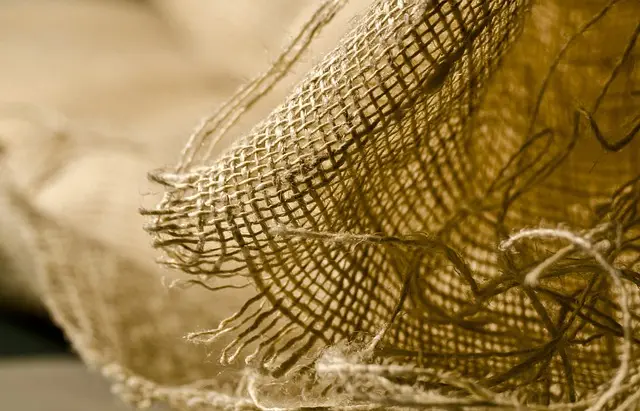Muscle soreness after exercise, known as DOMS (Delayed Onset Muscle Soreness), is a common response to intense or unfamiliar physical activity, particularly among novice exercisers or those altering their workout routines. It results from inflammation, muscle fiber damage, and metabolic byproduct buildup. To manage this discomfort, some turn to kratom, a legal natural supplement in regions like Michigan, due to its potential analgesic effects derived from compounds like mitragynine and 7-hydroxymitragynine, which interact with opioid receptors for pain relief and mood enhancement. However, it's imperative to use kratom cautiously, adhering to recommended dosages and consulting healthcare providers to avoid negative side effects or drug interactions. In Michigan, where kratom's legal status varies by locality, its responsible use within the bounds of the law and under medical guidance is key for those seeking an alternative to traditional recovery methods. This approach to muscle recovery should be holistic, encompassing balanced workouts, proper nutrition, hydration, rest, and when appropriate, the judicious use of kratom as part of a natural pain management strategy, all aimed at promoting overall fitness and well-being.
Muscle soreness is a common experience for those who push their physical limits through exercise, particularly after engaging in new or intense activities. Understanding the origins of this discomfort and managing it effectively are key to maintaining an active and healthy lifestyle. This article delves into personalized workout strategies that cater to muscle soreness relief, including insights into the natural supplement kratom, which has gained attention for its potential benefits in managing muscle pain. As we explore how kratom, which is legal in Michigan, can be integrated into a workout regimen, we’ll also cover active recovery techniques, the role of stretching and massage therapy, and dietary adjustments to enhance recovery and performance. Whether you’re an athlete or a fitness enthusiast, tailoring your routine to minimize soreness and promote recovery is essential for long-term health and sustained activity.
- Understanding Muscle Soreness and Its Causes
- <a href="#—-identifying-different-types-of-muscle-soreness”> Identifying Different Types of Muscle Soreness
Understanding Muscle Soreness and Its Causes

Muscle soreness, commonly known as delayed onset muscle soreness (DOMS), is a condition characterized by pain and tenderness in the muscles that have been subjected to unaccustomed or intense physical activity. This phenomenon is particularly prevalent among individuals who are new to exercise or those who have altered their routine significantly. The mechanisms underlying muscle soreness are multifactorial, involving inflammation, damage to muscle fibers, and metabolic byproducts accumulating within the cells as a response to the strain. Understanding the triggers of this discomfort is crucial for developing effective workout plans that minimize its occurrence or alleviate its effects.
In the realm of managing muscle soreness, natural supplements such as kratom have garnered attention due to their potential analgesic properties. In states like Michigan, where kratom’s legal status is clarified and accessible, it presents an option for individuals seeking alternative methods for pain relief. The alkaloids found in kratom leaves, particularly mitragynine and 7-hydroxymitragynine, are believed to interact with the brain’s opioid receptors, providing pain relief and a mood enhancement that could be beneficial for those experiencing muscle soreness. However, it is imperative to approach the use of such supplements with caution, adhering to recommended dosages and consulting healthcare professionals to avoid any adverse effects or interactions with other medications.

When addressing muscle soreness, individuals often seek natural solutions to complement traditional recovery methods like rest and hydration. Kratom, a botanical supplement derived from the Mitragyna speciosa tree, has gained attention for its potential effects on pain relief and mood enhancement. In Michigan, where kratom’s legal status is subject to local regulations, many residents explore its use within the confines of the law. Proponents claim that certain strains of kratom can offer relief from muscle soreness, possibly due to its alkaloid content, which may interact with opioid receptors in the body. However, it’s crucial to approach the use of kratom with caution; while some users report positive experiences, it’s a potent substance that requires responsible usage and a clear understanding of dosage guidelines. For those in Michigan looking for relief from muscle soreness without pharmaceuticals, kratom may be an alternative worth considering, provided it aligns with their health goals and local legal frameworks. As always, it’s advisable to consult with healthcare professionals before integrating any new supplement into one’s regimen, especially when combined with a tailored workout plan aimed at mitigating muscle soreness.
<section id="—-identifying-different-types-of-muscle-soreness”>
Identifying Different Types of Muscle Soreness

Muscle soreness can manifest in various forms, and understanding the different types is crucial for effective relief and recovery strategies. Delayed onset muscle soreness (DOMS) typically occurs 24 to 72 hours after unaccustomed or intense physical activity. It’s characterized by tenderness and pain in the muscles, often accompanied by inflammation and weakness. On the other hand, acute muscle soreness arises immediately after an exercise session and is usually a result of micro-tears in the muscle fibers due to overexertion or improper form. Recognizing the type of muscle soreness one is experiencing is the first step toward addressing it.
For those seeking relief, particularly in states like Michigan where kratom’s legal status allows for its use, this natural supplement may offer some respite. Kratom, derived from the Mitragyna speciosa tree, has been traditionally used in Southeast Asia for pain management and energy boosting. Its alkaloids, such as 7-hydroxymitragynine and mitragynine, are believed to interact with opioid receptors in the brain, providing analgesic effects that can help alleviate muscle soreness. However, it’s important to consult healthcare professionals before incorporating kratom into any workout recovery plan, given its potential for side effects and interactions with other substances. A tailored workout regimen, combined with proper nutrition, hydration, and rest, along with natural supplements where appropriate, can be an effective approach to managing muscle soreness and maintaining overall fitness healthily.
muscle soreness can be a significant hindrance to maintaining an active lifestyle, and understanding its origins is crucial for effective management. This article has explored various types of muscle soreness, their causes, and strategies to alleviate discomfort post-exercise. For those in Michigan looking for natural alternatives, kratom has emerged as a potential option where legal, offering relief due to its analgesic properties. Customized workout plans that incorporate restorative exercises and stretching can significantly aid in reducing soreness. By tailoring activities to individual needs and fitness levels, individuals can safely navigate their recovery process. It’s always advisable to consult with healthcare professionals before integrating kratom or any new regimen into your wellness routine, ensuring a balanced and healthy approach to fitness and muscle health.






